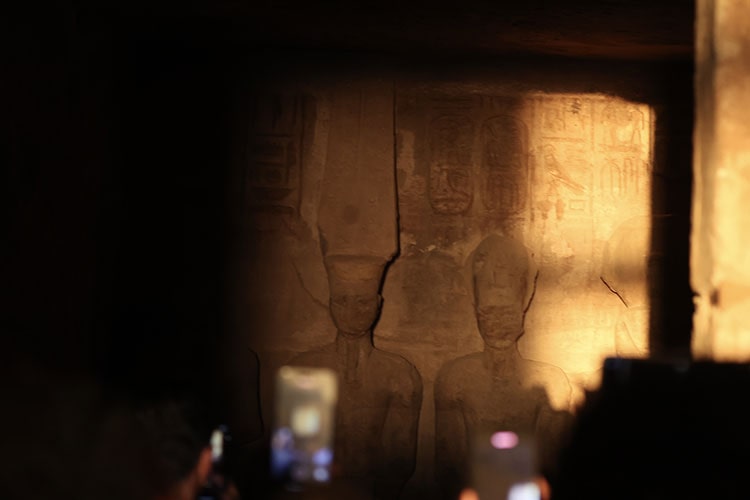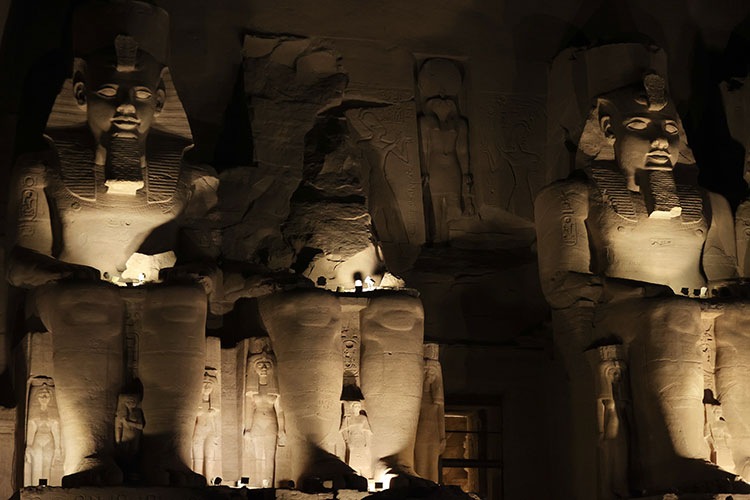Sunlight illuminated the statue of Pharaoh Ramses II at the Abu Simbel Temple in Aswan, Egypt.
According to a statement from the Aswan Governorate, this natural phenomenon, which occurs only twice a year, was observed by 4,000 tourists, including 1,400 foreigners.

It is known that the area around Abu Simbel was significant in terms of astronomy during the time of the Pharaohs. To the northwest of Abu Simbel, there is a stone compass dating back 11,000 years that indicates the time for rainfall.

The Abu Simbel Temple, carved into the mountain over a period of 20 years, features four colossal statues of Ramses at its entrance. This historical event occurs only on October 22, considered the “birthday” of Ramses II, and February 22, known as his “coronation day,” lasting for 20 minutes.
In ancient Egypt, the sunlight striking the face of the Ramses II statue on October 22 marked the beginning of the “agricultural” season, while February 22 signified the start of the “harvest” season.

